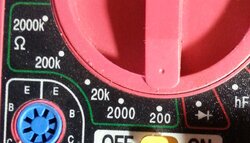Hello All ...
I have always used a Honeywell millivolt thermostat to operate the stove ...
Now the problem/questions ...
Last week in on/off mode the stove would not come on when setting the thermostat ...
I guess the thermostat can go bad or what else ?
In High/Low mode I hit the on button and it fires right up but when setting the thermostat to temp the stove never changes between high or low ...
Again bad thermostat or something else ?
In manual it does what ever I set it to ...
I hope I explained this so it is understandable ... THANK YOU in advance !!
I have always used a Honeywell millivolt thermostat to operate the stove ...
Now the problem/questions ...
Last week in on/off mode the stove would not come on when setting the thermostat ...
I guess the thermostat can go bad or what else ?
In High/Low mode I hit the on button and it fires right up but when setting the thermostat to temp the stove never changes between high or low ...
Again bad thermostat or something else ?
In manual it does what ever I set it to ...
I hope I explained this so it is understandable ... THANK YOU in advance !!


